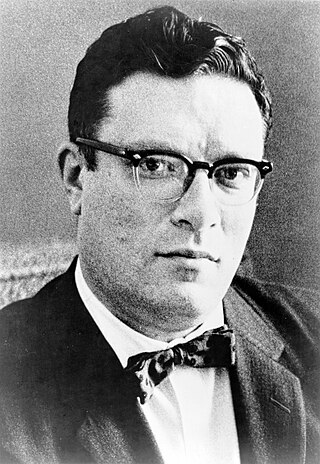
Isaac Asimov was an American writer and professor of biochemistry at Boston University. During his lifetime, Asimov was considered one of the "Big Three" science fiction writers, along with Robert A. Heinlein and Arthur C. Clarke. A prolific writer, he wrote or edited more than 500 books. He also wrote an estimated 90,000 letters and postcards. Best known for his hard science fiction, Asimov also wrote mysteries and fantasy, as well as popular science and other non-fiction.

The Caves of Steel is a science fiction novel by American writer Isaac Asimov. It is a detective story and illustrates an idea Asimov advocated, that science fiction can be applied to any literary genre, rather than just being a limited genre in itself.

Drexel Jerome Lewis Bixby was an American short story writer and scriptwriter. He wrote the 1953 story "It's a Good Life", which was included in The Science Fiction Hall of Fame. It formed the basis of a 1961 episode of The Twilight Zone and was remade in Twilight Zone: The Movie (1983). He wrote four episodes for the Star Trek series: "Mirror, Mirror", "Day of the Dove", "Requiem for Methuselah", and "By Any Other Name". With Otto Klement, he co-wrote the story upon which the science fiction movie Fantastic Voyage (1966), the related television series, and the related Isaac Asimov novel were based. Bixby's final produced or published work so far was the screenplay for the 2007 science fiction film The Man from Earth.
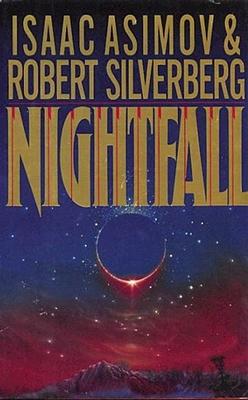
"Nightfall" is a 1941 science fiction short story by the American writer Isaac Asimov about the coming of darkness to the people of a planet ordinarily illuminated by sunlight at all times. It was adapted into a novel with Robert Silverberg in 1990. The short story has appeared in many anthologies and six collections of Asimov stories. In 1968, the Science Fiction Writers of America voted "Nightfall" the best science fiction short story written prior to the 1965 establishment of the Nebula Awards and included it in The Science Fiction Hall of Fame, Volume One, 1929–1964.
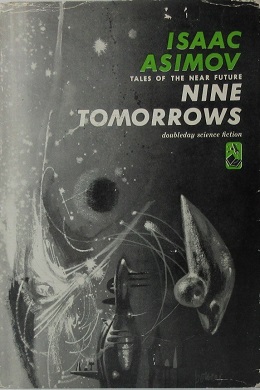
Nine Tomorrows is a collection of nine short stories and two pieces of comic verse by American writer Isaac Asimov. The pieces were all originally published in magazines between 1956 and 1958, with the exception of the closing poem, "Rejection Slips", which was original to the collection. The book was first published in the United States in 1959 and in the UK in 1963. It includes two of Asimov's favorite stories, "The Last Question" and "The Ugly Little Boy".

The Best of Isaac Asimov is a collection of twelve science fiction short stories by American writer Isaac Asimov, published by Sphere in 1973. It begins with a short introduction giving various details on the stories, such as how they came to be written, or what significance merits their inclusion in a "best of" collection, as well as some of Dr. Asimov's thoughts on a best of collection itself. The stories included are two of his early works, two of his late works (post-1960), and eight from the 1950s, which he refers to as his "golden decade" in the introduction. Except for the last story in the book, "Mirror Image", none of the stories are related to his Robot and Foundation series, while a few mention the Multivac computer.

"The Deep" is a science fiction novelette by American writer Isaac Asimov. It was written in July 1952 and first published in the December 1952 issue of Galaxy Science Fiction. The story subsequently appeared in the Asimov collections The Martian Way and Other Stories (1955) and The Best of Isaac Asimov (1973). In In Memory Yet Green, Asimov wrote that his motive in writing the story was to deliberately test whether one could do anything in science fiction, so he invented a society in which mother love was considered obscene.

Lucky Starr and the Moons of Jupiter is the fifth novel in the Lucky Starr series, six juvenile science fiction novels by Isaac Asimov that originally appeared under the pseudonym Paul French. The novel was first published by Doubleday & Company in August 1957. It is the only novel by Asimov set in the Jovian system.
Mesoplanets are planetary-mass objects with sizes smaller than Mercury but larger than Ceres. The term was coined by Isaac Asimov. Assuming size is defined in relation to equatorial radius, mesoplanets should be approximately 500 km to 2,500 km in radius.
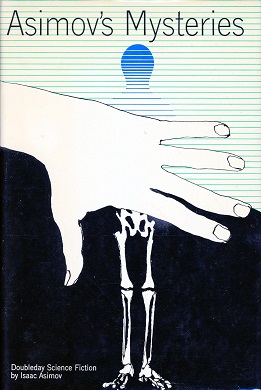
Asimov's Mysteries, published in 1968, is a collection of 14 short stories by American writer Isaac Asimov, almost all of them science fiction mysteries. The stories were all originally published in magazines between 1954 and 1967, except for "Marooned off Vesta", Asimov's first published story, which first appeared in 1939.
"The Singing Bell" is a science fiction mystery short story by American writer Isaac Asimov, which first appeared in the January 1955 issue of The Magazine of Fantasy and Science Fiction and was reprinted in the 1968 collection Asimov's Mysteries. "The Singing Bell" was the first of Asimov's Wendell Urth stories.
"The Talking Stone" is a science fiction mystery short story by American writer Isaac Asimov, which first appeared in the October 1955 issue of The Magazine of Fantasy and Science Fiction and was reprinted in the 1968 collection Asimov's Mysteries. "The Talking Stone" was the second of Asimov's Wendell Urth stories.
"The Dust of Death" is a science fiction/mystery short story by American writer Isaac Asimov, first published in the January 1957 issue of Venture Science Fiction Magazine and reprinted in the 1968 collection Asimov's Mysteries.
"Super-Neutron" is a science fiction short story by American writer Isaac Asimov, originally published in the September 1941 issue of Astonishing Stories, and included in the 1972 collection The Early Asimov. Asimov originally intended the story to be the first in a series, but was unable to come up with any further story ideas.
"Farewell to the Master" is a science fiction short story by American writer Harry Bates. It was first published in the October 1940 issue of Astounding Science Fiction on page 58. It provided the basis of the 1951 film The Day the Earth Stood Still and its 2008 remake. In 1973, the story was adapted by Marvel Comics for its Worlds Unknown series. According to Gizmodo, the 1973 adaptation was more faithful to the original story than was the 1951 film.
"The Monster" is a science fiction short story by Canadian-American writer A. E. van Vogt, originally published in Astounding in August 1948.
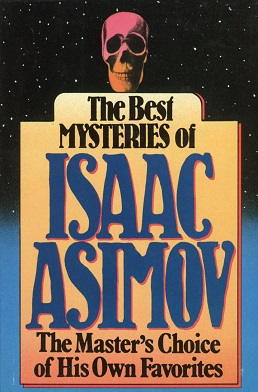
The Best Mysteries of Isaac Asimov is a collection of mystery short stories by American author Isaac Asimov. It was first published in hardcover by Doubleday in 1986, and in paperback by the Fawcett Crest imprint of Ballantine Books in September 1987.

Teleportation is the theoretical transfer of matter or energy from one point to another without traversing the physical space between them. It is a common subject in science fiction and fantasy literature, film, video games, and television. In some situations, teleporting is presented as time traveling across space.
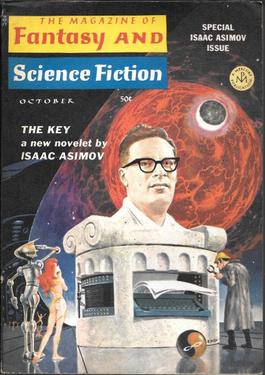
"The Key" is a science fiction mystery novelette by American writer Isaac Asimov. It is one of the stories featuring the reclusive scientist Wendell Urth. It first appeared in The Magazine of Fantasy & Science Fiction in October 1966, and was reprinted in the anthologies Asimov's Mysteries (1968) and The Best Mysteries of Isaac Asimov (1986).
Depending on the counting convention used, and including all titles, charts, and edited collections, there may be currently over 500 books in Isaac Asimov's bibliography—as well as his individual short stories, individual essays, and criticism. For his 100th, 200th, and 300th books, Asimov published Opus 100 (1969), Opus 200 (1979), and Opus 300 (1984), celebrating his writing.











